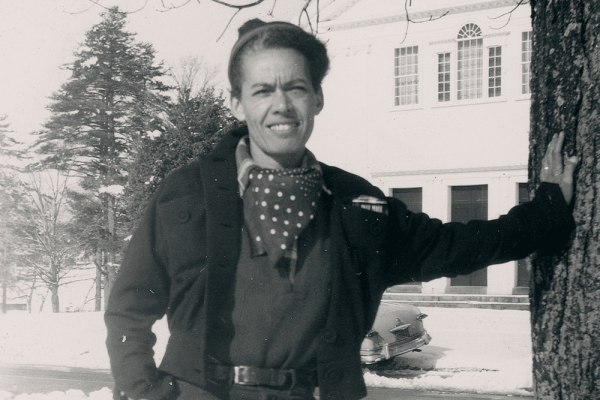Times of crisis tend to engender apocalyptic thinking. We’re seeing that today during the coronavirus pandemic. Conspiracy theories abound, and some people are talking about the end of the world. Could the current crisis be God’s judgment for sinfulness or our persistent abuse of the environment? Is an apocalyptic reckoning at hand?
In our description of the long declension from evangelical social activism in the 19th century — social reform almost invariably directed toward those on the margins — to the evangelical embrace of Donald Trump, we encounter the speed bump of apocalypticism beginning in the late 19th century and continuing well into the 20th. The story, albeit in abbreviated form, looks something like this.
In the wake of the Second Great Awakening early in the 19th century, evangelicals plunged into the enterprise of social reform, including common schools, peace crusades, the abolition of slavery, temperance, prison reform, and women’s rights. What animated their efforts was the conviction that they could reform society according to the norms of godliness and thereby bring about the kingdom of God here on earth — and, more particularly, here in America.
Theologians call this postmillennialism, the doctrine that Jesus will return to earth after the millennium, the thousand-year period of peace and righteousness predicted in the book of Revelation. The corollary was that it was incumbent on the faithful to reform society and pave the way for the “second coming” of Jesus.
Those efforts at social reform were remarkably fruitful. Evangelicals succeeded in shaping the conscience of the nation in the early decades of the 19th century, and their persistence eventually drove an angry South to secession. But the Civil War itself began to prompt a reconsideration of postmillennialism. The battlefields of Gettysburg and Antietam and Manassas, not to mention the horrific tally of casualties (historians now estimate something close to three-quarters of a million), prompted evangelicals to reexamine their postmillennial optimism about the perfection of society.
The ensuing, postwar decades provided little encouragement. Industrialization and urbanization began to reshape American society. The arrival of non-Protestant immigrants, most of whom did not share evangelical scruples about temperance, came to be seen more as a threat than an opportunity. Teeming, squalid tenements, roiling with labor unrest, hardly resembled the precincts of Zion that evangelicals had so confidently predicted earlier in the century.
Evangelicals began, in greater and greater numbers, to appropriate the ideas of John Nelson Darby, a member of the Brethren (later known as Plymouth Brethren) in Britain. In his writings and during his visits to the United States, Darby informed American evangelicals that they had been interpreting the Bible incorrectly. Jesus would not return to earth after the millennium; he would return before the millennium, which meant that Christians could anticipate the second coming at any moment, at which time they would be “raptured” into heaven and those “left behind” would face divine judgment.
The consequence of Darby’s premillennialism (Jesus would return before the millennium) was to absolve evangelicals of responsibility for addressing social ills. If Jesus was going to return at any moment, why bother with making this world a better place?
I call premillennialism a theology of despair because it allowed evangelicals to throw up their hands in resignation. At the same time that the Social Gospel began to take hold among Protestant liberals, based on the conviction that God can redeem not only sinful individuals but also sinful social institutions, evangelicals shifted their focus to individual regeneration.
The belief in Christ’s imminent return transformed American evangelicalism in ways ranging from trivial to profound. At the former end of that spectrum, premillennialism is responsible for some colossally bad architecture: If Jesus is going to return at any moment, why bother with design or ornamentation? Cinder block will do just fine — the triumph of function over form.
At the other end of the spectrum, premillennialism shifted evangelical attentions from the collective ills of society to the salvation of individuals. Premillennialism became a potent device for urging sinners to convert. Preachers would often cajole their congregants into making a profession of faith — what Billy Graham called “making a decision for Christ” — by warning that if they died suddenly or if Jesus returned as he could at any moment, those who were not “saved” would be consigned to judgment and hell.
Although premillennialism began to relax its hold on American evangelicals in the 1970s (more on that later in this series), a motion picture produced in 1972, A Thief in the Night, illustrates the power of premillennial thought among evangelicals. The movie, written and directed by Donald W. Thompson, opens with a woman awaking from a dream to find her husband’s shaver buzzing in the bathroom sink and he has simply disappeared. After the opening music — “I Wish we’d All been Ready,” by Larry Norman — the film continues with some straightforward preaching about the imminent return of Jesus, warning that anyone who is not saved will be damned.
Then Jesus returns, the faithful depart, and those left behind (Tim LaHaye’s book and film series by that title was inspired by A Thief in the Night) face terrible persecution. Anyone who does not accept the “mark of the beast” is unable to purchase the necessities for survival and is hunted down by the evil authorities. The woman whose husband disappeared in the rapture tries to elude capture by police cars and helicopter. Just as she is about to jump off a dam, she awakens from her dream — and the opening sequence repeats itself. She finds the shaver in the bathroom, searches for her missing husband and lets out a blood-curdling scream. Jesus has returned to collect the faithful, and she was not ready.
Despite its low budget and some infelicities in acting, A Thief in the Night was enormously popular among evangelical audiences. And here, in the interest of full disclosure, I must divulge that Donald Thompson, the writer and director, was my Sunday school teacher. A Thief in the Night was inspired by my father’s Sunday evening sermons on the book of Revelation at the Westchester Evangelical Free Church in Des Moines, Iowa. My father played the “good” preacher in the film, the preacher who warned that Jesus would return at any moment.
The doctrine of premillennialism — Jesus will return imminently — effectively absolved American evangelicals of responsibility to reform society and redirected their energies toward individual regeneration. With very few exceptions, evangelicals remained outside the political fray in the final decades of the 19th century and well into the 20th.
Next time: The making of the evangelical subculture. View the full series here.
Got something to say about what you're reading? We value your feedback!







